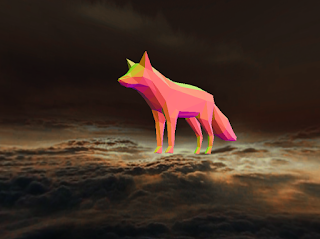Future Work
There are a few things in particular that I could improve with my solution, but as I see as out of scope for this project. I don't like that some parameters in the code is hard-coded. Far from everything is hard-coded and I think I have managed to use design-patterns to separate classes rather well in general. However, since I wrote the code somewhat hastily, there are a bit too many parameters hard-coded to make it "work". Something that could have been fixed early on is to not have tiny coordinates, such that there is a huge gap between the x-values x == 1 and x == 2. This caused me to multiply certain values in other parts of the code by a constant in order for them to scale. Also, the OBJ-file which is used for rendering a fox was downloaded for free legally on the internet, but it seems to be made by a hobbyist that made the local vertex coordinates sloppily. Usually OBJ vertex coordinates are between -1 and 1. But these vertices can go to about from 20 to -20. A tip
